|
WAR IN THE PACIFIC National Historical Park |
U.S. Department of the Interior National Park Service |

|
Asan Beach Guide
WALK #2— ASAN RIDGE (continued)
THE REEF
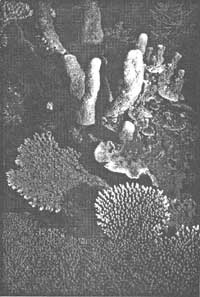
Have you noticed in Guam (as on other Pacific Islands) that waves break far from shore? You can tell by the location of the wave crests and the different color of the water where the coral reef stops and the deeper blue ocean begins. Swimming is easy shoreward of the breakers because the water is relatively shallow and calm, and the turquoise-blue water is incredibly clear.
Most of Guam is surrounded by either a fringing or barrier coral reef that causes the ocean's energy to be expended on the outer edge of the reef rather than on the beach. Note how the outer reef in Asan Bay makes a "V" toward shore just east of Asan River.
Corals and algae, primitive marine animals, thrive in the warm, shallow, and clear water. Guam's surface water is 82-86°F (28-30°C) all year, well within the range needed by coral. The shallow water, 0-335 feet (0-100 meters) but mostly less than 100 feet (30 meters), must be clear to allow sunlight penetration. Most corals co-exist with algae which require light for photosynthesis, thus restricting the depth of live coral. These organisms exude limy secretions which subsequently harden into external skeletons. Over time, this lime (or calcium) builds upon itself to form the reef. The edge of the reef, where the waves first hit shallow water, marks the boundary between the deep ocean (in this case the Philippine Sea) and the shallow shoreward area called the reef flat, which may be only 4 feet deep or less (1.2 meters). In some parts of Guam (Apra Harbor and Cocos Lagoon) as elsewhere in the tropical Pacific, there may be only narrow reef flat and the outer reef is separated from the shore by a deep salt water lagoon. This reef is then called a barrier reef.
Guam lies in what biologists call the Indo-West Pacific zoogeographic zone. This part of the Pacific is particularly rich in fish, with about 870 species in waters around the Marianas. (In contrast, Hawaii has about 460 inshore species; and the Philippines to the west as over 2000 species.) The greatest number are located in the coral reef ecosystem because of its complexity and variety of depth zones.
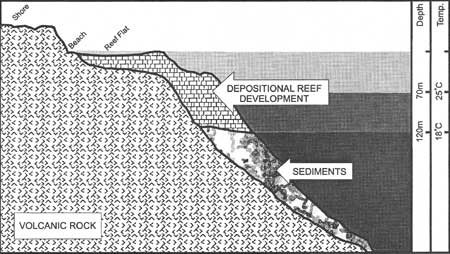
TYPICAL REEF PROFILE
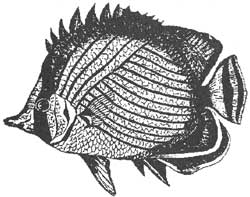
The complexity of the reef ecosystem creates the variety of habitats that support the colorful fishes that typify tropical islands. But the fish are only a part of a complex ecosystem which also includes seaweeds, seagrasses, phytoplankton (microscopic floating plants), zooplankton (microscopic floating animals), crustaceans (crabs and shrimps), mollusks (snails, clams, oysters), corals, echinoderms (sea urchins and starfish) as well as the so-popular fishes. Biologists say that coral reefs are to the marine world what tropical rainforests are to life on land. They support the most diverse ecosystems in the oceans.

Not only do coral reefs provide such a rich habitat for marine life, they have also traditionally provided food resources for native islanders, in Guam the Chamorro. You may see fishermen with poles or nets gathering fish and other food from the reefs and lagoons surrounding the island.
Coral reefs are an important component of tropical Pacific islands for many reasons:
(1) They provide habitat for a rich variety of marine life of interest to novice and scientist alike.
(2) They provide food resources for native islanders.
(3) Their beauty attracts tourists and provides recreation for both visitors and island residents.
(4) Old and dead coral is a source of aggregate in an environment where sand and gravel are scarce. Most of the white sandy beaches are actually tiny pieces of eroded coral.
(5) They serve as protective barriers against high seas, from typhoons or tsunamis (commonly called tidal waves).
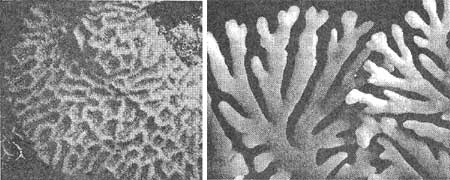
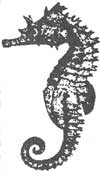
Coral reefs around the world are increasingly being threatened by pollution, damage from boating and anchors, and deliberate destruction. You can do your part in preserving this vital natural resource by not damaging any reef environment or collecting any coral, either alive or dead, or any other organism. Not only is it illegal, but it thoughtlessly destroys an important and beautiful resource for future generations.
We hope your visit gives you time to enjoy the waters around Guam. But, remember that the ocean, and the seemingly harmless lagoon, can be potentially dangerous. Be alert to the potential dangers of unpredictable currents or tides. Always use proper equipment, respect the marine life, and never swim alone.
Return to the base of Asan Ridge by the restroom building, and continue your walk towards Marine Corps Drive.
Last Updated: 01-Apr-2004
